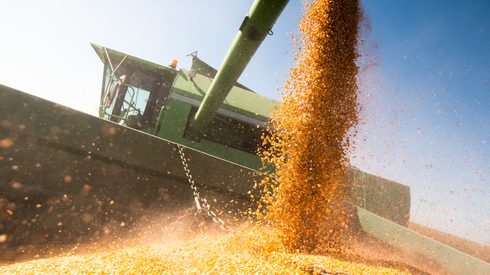The USDA took action and cut corn production outlooks in a number of key producing nations in its August update of its Wasde report, following weeks of mounting concerns over the impact of dry conditions in the northern hemisphere.
Perhaps most eye-catching was the heavier-than-expected cut to US yields and harvested area, amid high temperatures across the Midwest.
The trade had been looking for a cut to the yield, with most guesses averaging around a slim 0.6 bushel per acre (bpa) reduction to bring the 177 bpa down to 176.4 bpa.
When the report landed, the yield was reduced to 175.4 bpa – a markedly bigger cut than all analysts consulted by Fastmarkets Agriculture prior to the report’s release – with that cut compounded by a 100,000-acre reduction to the harvested area.
The net result cut US production from 14.5 billion bushels (368.5 million tonnes) to 14.36 billion bu (364.7 million tonnes) – sailing past the 14.43 billion bu that had been expected.
The move was enough to blunt the impact of reduced usage figures for the 2021-22 marketing year, where a tweak in estimates of corn used in ethanol production shaved 25 million bushels off the figure to clock in at 5.35 billion bu (135.9 million tonnes).
While some of that was clawed back, 20 million bushels were added to ending stocks and rolled into the start of 2022-23.
Corn production outlook
However, the reduction in production meant that even with cuts to the new crop, the export outlook and feed and residual use, stock levels are still expected to take a hit.
Analysts had looked for a reduction to 1.411 billion bu (35.8 million tonnes), but the USDA delivered its outlook at 1.38 billion (35.2 million tonnes), down 9% versus the previous year.
Figures for the rest of the world offered some respite to that US loss, with Ukraine’s production figures hiked sharply higher on the back of the UN and Turkish-brokered grain corridor deal and signs that the country’s farmers have delivered a sizeable crop under the circumstances.
Armed with that, exports rose from 9 million tonnes to 12.5 million tonnes, with Russia also seeing an agreement dividend, as production and exports were pushed up respectively by half a million tonnes to 15 million tonnes, and 200,000 tonnes to 4 million tonnes.
But European losses more than offset that gain – particularly with South American outlooks holding steady at 55 million tonnes for Argentina and 126 million tonnes for Brazil – and the USDA took the opportunity to raise EU imports by 3 million tonnes to 19 million tonnes.
As the European long, hot summer continues to grind down water reserves, mounting fears for the region’s production – from the UK right across to the Black Sea region – meant the EU’s production figures slumped by 8 million tonnes to 60 million tonnes.
Much of that increased EU import volume could arguably be met by cross-border exports from Ukraine, potentially neutering the 3.5 million tonnes increase in the country’s export slate as far as the rest of the world was concerned.
With most other figures holding largely stable, overall new crop global production edged down to 1.18 billion tonnes, while ending stocks crumbled to 306.7 million tonnes – well below the 311 million tonnes that analysts had expected.
Nonetheless, despite cuts to production and ending stocks in the 2022-23 marketing year, corn futures turned heavily negative in the aftermath of the report’s release – despite having spent much of the day showing slight gains.
The move in part reflected heavy losses on stable mate soybeans, while wheat also reported losses.
The effect was temporary, however, and corn returned to positive territory in later trading despite bean losses.
For more information on the current corn market, take a look at our dedicated page for corn market insights.





